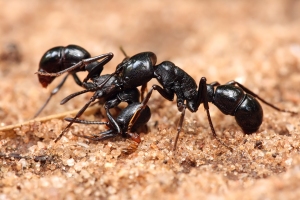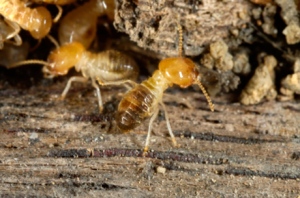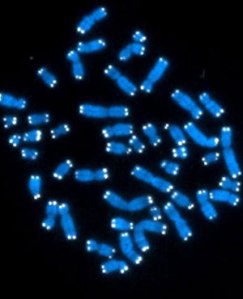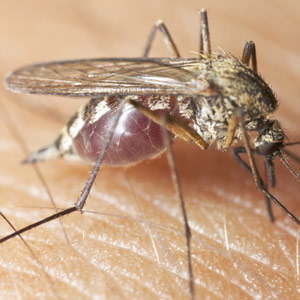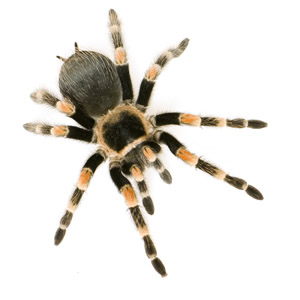Facts about Ants in South Africa
There are two main pest species, the Black or Garden Ant (Lasius niger) and the Pharoah’s Ant (Monomorium pharaonis). They both cause nuisance as they travel widely in search of food, following trails and clustering around the food source.
Pharaoh’s Ants pose the biggest risk to health. As they often feed in unhygienic areas such as drains and bins they can easily transmit pathogens. This can be of particular concern if infestations are found in sterile hospital environments. Infestations can also be more difficult to eradicate as the worker ants have the ability to ‘bud off’ new colonies if the main colony is under stress.
Black ant
| Latin name: Alson known as |
Lasius niger Garden ant |
| Length: | 2 – 12mm |
| Colour & description: | The workers are 2 – 5mm in length and dark brown/black. Queens are upto 12mm long and are brown. |
| Habits & habitat: | Black ants nest outdoors in walls and under paving etc. They forage widely for food and water and commonly enter domestic premises and control is only required where they have become a serious nuisance indoors. Have only 1 queen per nest. |
| Life cycle: | 50 – 70 days. Reproduction rate: A black ant colony has a single queen and tends to have about 5,000 individuals. A queen can live up to 12 years. |
Pharoah’s Ant
| Latin name: | Monomorium pharaonis |
| Length: | 1.5 – 5mm |
| Colour & description: | The workers are 1.5 – 2mm in length and yellow-brown in colour. The antennal segments end in a distinct club with three progressively longer segments. Queens are between 3.6 – 5mm long and are dark red in colour. They are winged but do not fly. |
| Habits & habitat: | They require warm humid conditions so in many areas they are confined to buildings. In warm climates infestations can be found outside. Infestations can be found in a wide variety of locations including apartment blocks, hotels, hospitals, food handling premises etc.
Have many queens per nest and infestations tend to spread through budding. Foraging workers leave the main nest with brood to form satellite colonies. |
| Life cycle: | 38 – 45 days |
| Reproduction rate: | A Pharaoh Ant queen can lay 400 or more eggs in her lifetime. Most lay 10 to 12 eggs per batch in the early days of egg production and only four to seven eggs per batch later. |
Termites: Chomping away at home owners
Hailed the silent destroyer, timber destroying subterranean termites also known as white-ants are any home owner’s worst nightmare.
They often go unnoticed for years without any immediate signs only to be discovered when the damage done is too severe. These termites, however, are not the only ones causing the damage. Various unregistered pest control officers and building contractors can add to the problem by using inadequate and incorrectly applied pre-treatment methods.
The South African Pest Control Association (SAPCA) regularly receives complaints from home owners who move into their homes only to find that the grounds on which the house is built or the structure have not been treated properly. Often this is the result of building contractors appointing unregistered pest control officers who act illegally in either using banned chemicals or applying chemicals incorrectly.
Termiticides are registered through the Registrar Act 36 of 1947 only after thorough testing by the South African Bureau of Standards (SABS). The testing is done in accordance with the SABS code of practice 0124. Modern termiticides, which are more ‘environmentally friendly’, only offer a protection and efficiency guarantee to a maximum of 5-years compared to older compounds like DDT and Chlordane, which have been banned.
This however is not always the case, according to Mark Enslin, President of the South African Pest Control Association. SAPCA have found that there are PCOs that offer to termite-proof buildings at a rate per square metre, which is well below the wholesale cost of the chemicals alone and they are still offering a 10-year guarantee.
“There is no way that this can be possible,” says Enslin. He continues by saying that any pest control company charging such a ridiculous price with a 10-year guarantee on top of it, is either using banned substances like Chlordane, or is not using the termiticides at the prescribed dosages, in accordance with the label and as prescribed by SABS 0124. “Since Chlordane has been banned, pest control companies are no longer able to offer a 10-year guarantee on termite proofing. There is currently no chemical on the market that can offer the kind of protection that Chlordane did,” says Enslin.
Chlordane was banned due to its hazardous effect on humans and the environment. The chemical contaminates the air of homes by diffusion through concrete flooring, ceiling drywall or outgassing from previously treated indoor areas. Documented health problems can include child cancers, leukemia, chronic infections, bronchitis, asthma, infertility, neurological disorders and aggression.
Enslin feels that the government, architects and building contractors have a part to play in this kind of misconduct as they are demanding a 10-year guarantee. Developers are also pushing for pest controllers to undercut, thus encouraging pest control operators to use termiticide at below prescribed dosages.
“I understand that one cannot expect the building contractor to play the watchdog, however they should arm themselves with information regarding the termite treatment. They should realise that since the cost of the registered products excluding labour and transport associated with the treatment are running between three to eight rand linear or square metre – it would therefore be unrealistic then to expect to pay less than R10 per Lm/sqm for pre-construction termite proofing. By turning a blind eye the contractor or developer is unwittingly ‘stealing’ from or defrauding the homeowner,” says Enslin.
Enslin continues to say that quotes below this price should be scrutinised because a person needs to relate the price paid for termite proofing to the value of the structure that they are wishing to protect.
The danger of inadequately applying termiticides is well illustrated in the example of a luxury lodge that was built on the banks of the Chobe by a South African construction company, who did their own “termite treatment”, using watering cans and chlorpyrifos purchased locally (Botswana). Termites entered the property a year later, causing more than R2 million in damages. The contractor was forced to repair the damage, and ultimately lost money on the construction job.
Imagine what would have happened if the building contractors had defaulted and the owners were left with a structure with that kind of damage. In this instance the damage occured in the first year, but it could occur at any time.
SAPCA motivates consumers and the industry to only make use of registered pest control operators. SAPCA members for example all adhere to a strict code of conduct prohibiting them from falling into the trap of undercutting, using unregistered chemicals and misappropriating chemicals.
“Consumers can rest assured that our members are also all registered with the Department of Agriculture. In addition to this, if the customers have a complaint about a SAPCA member, they have better recourse,” says Enslin. Also property owners should insist on proof that the termite proofing was done in accordance with National Building Regulation.
When selecting a pest control officer to termite-proof your home or to treat a current infestation ensure that he/she complies with the following:
– employed with a licensed pest control company
– in possession of advanced knowledge of construction and home building
– expert knowledge of termite identification and biology
– understanding of the local and state ordinances regarding pest control
– knowledge of the various treatment methods and resources to customise a treatment plan suitable for your development
– awareness of EPA-approved materials and environmental standards
– ability to provide detailed written notes of the preliminary inspection
– confidence in a guarantee of service from a stable company with a reputation for providing effective termite prevention, treatment and control.
– lastly, be suspicious of ‘cheap pricing’ and extended guarantees that exceed 5 years
Termite treatment is dependent on the type of termite that is found at the site and this classification can only be done by a trained technician. The type of termite further varies according to the geographical location of the premises. There are two main categories of termites namely the Subterranean and Dry Wood Termite, which can be found throughout South Africa. Harvester termites are the most common species found in the Western Cape.
Although termites form an important part of our local ecosystem by breaking down dead cellulose material, this can become a serious liability in residential areas, where timber is used in buildings and homes. When termites attack they weaken the timber, which can lead to the collapse of the building.
Ridding a building of termites requires special skills. There is however a few essential tips that home owners can use to lessen the risk of termite infestations. This includes eliminating moisture problems, by repairing leaky faucets and water pipes and removing potential food sources such as firewood and wood stumps around the perimeter of the house.
For more information contact The South African Pest Control Association on 0861114556 or click here to visit the website.
property24
‘Supergene’ identified in red fire ant
The complex social structure of the red fire ant, a fast-spreading invasive insect with a painful bite, is made possible by a DNA fusion known as a supergene, biologists said on Wednesday.
It is the first study to link supergenes to animal behaviour, the scientists reported in the journal Nature, and predicted a similar effect would be found in other species.
Native to South America, the red fire ant organises itself into two distinct types of social structure – one with a single queen per colony, the other with hundreds.
Though they are the same type of ant, the workers of either group would kill the queens of the other, the international researchers wrote.
The two groups also differ physiologically: one produces large queens which accumulate a lot of fat and fly away to start new colonies, where they feed their first larvae from their body reserves.
The other group yields smaller queens that remain in an established colony with existing workers and other queens.
Supergene
Scientists have previously identified a gene variation between the two groups, but have been at a loss to explain how a single gene change could yield so many social and physiological differences.
“People had speculated it could be a supergene, and now that has been confirmed,” biologist Andrew Bourke of the University of East Anglia said in a comment on the paper.
“There are other cases known where supergenes affect complex traits. But this is the first case where a supergene is shown to underpin complex social behaviour… in any animal.”
A supergene is a grouping of neighbouring genes on a chromosome that somehow become fused together and are then passed on, unchanged, from generation to generation.
In this case, the team found two variants of a supergene on a pair of ant chromosomes, comprising more than 600 genes or nearly 60% of the chromosome.
“This is the first description of a social chromosome, yet it is likely that such supergenes affecting social organisation also exist in other social insects,” wrote the authors.
As far as human beings are concerned, there is no evidence to date that supergenes are in any way involved in our social organisation, Bourke said.
The red fire ant has become a pest in the southern US, China and Australia. Its Latin name, Solenopsis invicta, means “the invincible”.
Lead author Laurent Keller said the findings may one day be useful in combating the ants.
It could, for example, lead to the manufacture of a chemical containing a synthetic version of that part of the supergene that tells workers to kill rival queens, turning them on their own instead and so ending the colony.
Ad for pest repellent ‘impossible’
Claims about a Homemark pest repellent device that allegedly creates a massive electrical “force field” have been short-circuited by the Advertising Standards Authority (ASA).
The ASA said in a ruling that a television commercial for the Pest Magic product explained how the product could be plugged into any electrical outlet.
The ad claimed that “this state of the art pest repeller uses the wiring of your home to create a massive force field that drives the pests out”.
The ASA said a member of the public, an electronic engineer, had complained that it was impossible to create a so-called force field using the wiring of a home.
In response, Homemark had submitted a report from Uwe Nusser, an engineering technologist who claimed to have researched the product.
But Homemark had at the same time noted that Nusser too raised concerns about the term “force field”.
The company said it would accordingly “take steps to address this claim”.
“Given that the respondent has undertaken to remove the reference to a “force field”, the (ASA) is satisfied that this will adequately address the concern raised by the complainant,” the ASA said.
fin24
Mozzies smell you, study finds
Researchers have identified some of the tools that mosquitoes use to smell their human prey and said on Wednesday their findings might help find better repellents or ways to trap and kill the pests.
They found 50 different genes that the mosquito Anopheles gambiae uses to sniff out tasty humans, and characterised how each one responded to different uniquely human odours, including those known to attract mosquitoes.
Their analysis, published in the journal Nature, might greatly improve ways to repel mosquitoes – a field dominated by just a few compounds such as Deet.
Each gene controls a receptor – a molecular doorway that in this case attaches to a molecule of human aroma.
Yale University’s John Carlson and colleagues transferred the 50 genes into the nerve cell of a type of fruit fly called Drosophila.
Fruit flies are well understood and don’t try to smell out humans, so any mosquito gene that lights up in response to a human smell is likely to be one used by mosquitoes to guide them to their blood meals.
Malaria control
“The results may have implications for the control of malaria, one of the world’s most devastating diseases,” Carlson’s team wrote.
“Screens for activators and inhibitors of selected receptors may identify compounds that attract mosquitoes into traps, interfere with their navigation, or repel them.”
Malaria, caused by a parasite, is spread by female mosquitoes seeking human blood. It kills close to one million people every year, mostly children and most of them in Africa, according to the World Health Organisation.
Mosquitoes also carry a range of other human ills, including dengue fever, West Nile virus, yellow fever and several viruses that cause encephalitis, an often deadly inflammation of the brain.
In two other studies in the same journal, researchers said they found a special protein called plasmepsin V that the malaria parasite uses to get into human red blood cells, and said blocking this protein could lead to better malaria drugs.
Don’t let the bugs bite
Insect bites are a common problem and may be difficult to diagnose.
The main classes of insects which cause bites are:
- Mites, spiders and ticks
- Centipedes
- Millipedes
- Mosquitoes and flies
- Fleas
- Ants, bees and wasps
- Lice
- Bedbugs, kissing bugs
Signs
The type of reaction which occurs after an insect bite depends on the species of insect, the age of the person and whether or not the person has been exposed to the insect before.
Insects not only bite, but also cause contact dermatitis or irritation to the skin. Most reactions to insect bites depend on a reaction to the saliva or venom.
When someone is bitten for the first time, no reaction develops. But after repeated bites, sensitivity develops. With prolonged, repeated exposure to the insect, a wheal develops immediately after the bite and an itchy bump forms 24 hours later.
Insect bites can be single or multiple, depending on the feeding habits of the insect concerned. For example, fleas may produce multiple bites, while a mosquito may bite only once.
Spiders may produce a reddened wheal and an ulcer.
In some cases an insect bite, for example bee stings, can cause a serious allergic reaction called anaphylactic shock.
A condition called papular urticaria can often be confused with insect bites, since it can resemble a number of insect bites in a small area. However, this is actually an allergy to insect bites and can be treated with calamine lotion or antihistamine creams.
Get help immediately if:
- Your child has difficulty breathing, is pale, sweaty, cold and drowsy. She may be suffering from an anaphylactic reaction.
- Your child develops flu-like symptoms or headaches, or experiences nausea.
- She has had an allergic reaction to the insect’s bite before.
Home treatment
If your child has been stung by a bee, remove the sting by gently scraping the skin with a clean knife blade. Tics can be removed by covering the tic with Vaseline and clutching the tic with tweezers as close to the skin as possible.
Treatment for insect bites is aimed at relieving the itch. This can be achieved by oral antihistamines, cool compresses and soothing lotions such as calamine.
In cases of multiple bites which are causing a lot of swelling and itching, particularly around the eyes, oral steroids may be useful but should only be used for a short time.
Call your doctor if:
- your child has an obviously infected bite
- there is marked redness and swelling around the bite which is becoming increasingly painful
- there are multiple bites which are causing swelling around the eyes
Prevention
When playing in the garden it is very difficult to prevent bites from the common insects which are present. But insect repellents are effective against mosquitoes, fleas, flies and ticks and should be used where these insects are common. Also sleep under a mosquito net and wear protective clothing.
Make sure that the household pets are free of fleas by regular use of the currently available anti-flea preparations. If fleas are obviously infesting the house then fumigation may be needed.
Spiders and spider bites
South Africa has an impressive 2000 identified spiders, and in the warmer summer months, chances are good that you will encounter some of them. We all know that spiders are our friends – they eat flies and mosquitoes and other bugs that we do not particularly like. But unfortunately, some of these spiders leave a bite that is not as friendly.
Know Our Spiders
Knowledge is the key to protect your loved ones from potentially venomous spiders – you need to know your local spiders, how to prevent bites and what to do when a bite does happen. Spider bites can be nasty, but rarely kill. But with all venomous encounters, some people are more at risk for complications: The elderly, children, immune system-compromised and allergic people.
Dangerous Spiders of South Africa
(Check out our spider gallery for some scary visuals!)
• Black Widow/Button Spider: This is probably the most well-known South African spider, identified by the red hourglass on its round, black abdomen. Button spiders are found all over South Africa, and they usually reside in quiet, dark places. They rarely wander into houses, and most bites occur when the spider are disturbed in its hiding place. Button spiders have neurotoxic venom, which means that it attacks the central nervous system. Only female spiders have fangs large enough to pierce human skin. Bites are very painful and symptoms will appear shortly after the bite: Sweating, raised blood pressure, muscle pain and cramps, pain and weakness in the limbs, the face becomes contorted, flushed and sweaty with drooping eyelids and swollen lips. In severe cases the body will contort and shake uncontrollably. Button spider bites are usually treated in hospital with anti-venom and patients are usually well enough to go home after 24-48 hours. The good news is that no deaths from button spiders have been recorded in the last 50 years.
• Violin Spiders: Violin spiders are found all over South Africa. They are normally brownish with dark markings on their bodies, as well as a characteristic violin-shape on the front part. Bites are rare, and usually happen at night when the victim is sleeping. They have cytotoxic venom, which means that it destroys tissue. Bites are small and painless, but after a few hours the site swells up and becomes discoloured, which is followed by blistering and peeling of the skin – leaving an open wound. Untreated bites can lead to infections, septicaemia and necrosis – and usually surgery is needed to remove the dead tissue. No anti-venom is available for violin spider bites, and treatment is to prevent infection and promote healing.
• Sac Spiders: Sac spiders are yellowish with a black head. It is an aggressive spider and is responsible for most spider bites in South Africa. They are notorious for the nasty bite they give, and most bites occur during the night when an unsuspecting victim rolls over on a roaming spider. Sac spiders have cytotoxic venom – the bite is painless and looks like a mosquito bite. After a few days it is swollen and painful and eventually forms a large lesion. No anti-venom is available, but antibiotics are needed to treat the lesion and prevent infection and tissue damage. The wound can take up to four weeks to heal, but in severe cases it can take up to a decade for the area to recover. Hospitalisation is not necessary, but plastic surgery is sometimes needed to remove damaged tissue.
• Baboon Spider: Baboon spiders are generally not poisonous, even though they can inflict a very painful bite. However, there are one species of baboon spider found in the Western Cape, Harpactira lightfooti, which has neurotoxic venom (similar to the black widow), causing severe symptoms such as pain, shock, vomiting, paleness and difficulty walking. They are frequently found in houses, but bites are fortunately very rare.
• Six-Eyes Sand Spider: These spiders are rare – they are found in desert areas and basically looks like a crab with sand stuck to its body. No human bites have been documented, but studies on rabbits have proven that these spiders might be lethal to humans, their bites causing massive tissue destruction and internal haemorrhaging.
Precautions:
• Keep your backyard clean from rubble – spiders love to hide in rubble.
• Inspect the underside of windowsills often – button spiders are notorious for hiding there.
• If you regularly find spiders in your house, check your children’s beds before you tuck them in.
• Clear clutter from the floor – encourage your children to throw clothes in the laundry basket and pick their toys up.
• Regularly inspect curtains and night frills for sac spiders – they are usually found in a silky sac in the pleats.
• Check behind picture frames and dust regularly.
• Check shoes before putting them on. It is surprising how many people get bitten on their feet.
• Try not to leave clothes on the washing line overnight, and if you do, check them thoroughly before putting them away.
• If you have a serious spider problem, consider spraying a thick layer of Baygon Green on the inside of windows and door frames every 4 weeks. Unfortunately it will kill the spider, so please only do this in extreme cases!
When Someone Is Bitten
• Keep calm. A spider bite does not mean instant death – in most cases you only need a painkiller, antihistamine and wound management. For button spiders, however, the patient should be taken to hospital immediately. Also, children should be checked out by a doctor as soon as possible after a bite.
• Try to catch the spider – this makes identification and treatment much easier.
• Wash the bite site with soap and water. Apply an ice pack.
• Wounds should be kept clean, and antiseptic cream applied regularly.
• All spider bite victims must go for a booster tetanus injection.
• If more severe symptoms appear, see a doctor immediately.
By Leanda C. Retief

